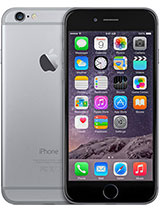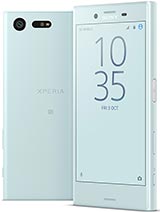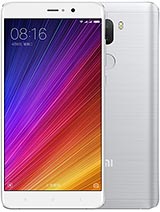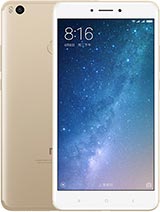GSMArena smartphone buyer's guide: 2017 July edition
2017 July edition

€300-€400
The next group of phones no longer settles for good - very good performance is expected, with excellence in at least a few areas being the norm. There are even some former flagships here; though they might be aging, they were once designed to be a brand's pride and joy.
Sub 5-inch compact phones
An iPhone for €400 you say? YES! It's no wonder that the iPhone 6 has been blowing up in popularity lately, as a few price cuts have made it the cheapest entry point into Apple's walled garden. It is two generations old now, but those were two relatively conservative updates by Apple so it's still not that far behind the curve.
Specs
|
Cons
| |
| Review |
Sure, there is the iPhone SE as well, which could potentially run you even less than the iPhone 6, but the 4-inch panel is tiny by current standards and it doesn't give the ecosystem enough room to unleash its potential.
Sony's 2016 Xperia X lineup may come with a few hardware compromises here and there, but it has aged very well, both support-wise and in pricing. The Xperia X Compact is one of the few options (and arguably the most capable) for Android fans looking into the sub-5-inch space.
Specs
|
Cons
| |
| Review |
Its Snapdragon 650 offers plenty of power, the 23MP main camera is a solid performer, and its 4.6-inch screen offers very good image quality. The 720p display resolution and lack of 4K video recording are some of the only caveats you have to live with.
5 to 5.5-inch phones
While on the topic of Sony and last year's X series, we can't fail to mention the Xperia X. It doesn't 4K capture either, but it offers an impressive selfie camera and a 5-inch FullHD panel. Surprisingly enough, it costs only a little more than its X Compact sibling.
Specs
|
Cons
| |
| Review |
Over at camp Samsung, the 5.2-inch Galaxy A5 (2017) catches our eye. If you find its metal body and Super AMOLED panel alluring as well, you will likely be faced with a decision between this and the J5 (2017).
Specs
|
Cons
| |
| Review |
Still, we feel that the FullHD display, IP68 dust and water resistance rating and a few small performance improvements here and there are worth the premium.
We struggled a bit with our decision to include the aging ZTE Axon 7 in the list, but it won us over at the end. Sure, it is easy to focus on the Snapdragon 820 chipset, but there is also the matter of the stunning QHD, AMOLED panel, 20 MP OIS-enabled camera, Quick Charge 3.0 support, and 4GB of RAM. The list goes on, but if you really need to pinpoint one reason to go for the Axon 7, it has the be the phenomenal Stereo speaker system with Dolby Atmos audio enhancement.
Specs
|
Cons
| |
| Review |
All this can be yours for about €330. Now that OnePlus has more or less abandoned the "ultra value" race, we just had to include the ZTE. Plus, the slightly modernized Axon 7s is already a thing as well, rocking a Snapdragon 821 chip. It is still pretty impossible to find at any reputable retailer, but be sure to keep an eye out for it.
5.7-inch and bigger phablets
We get it, multimedia is king in 2017 and if you want to supersize your smartphone on a budget, Xiaomi has you covered. Last year's Mi 5 flagship is now well within budget, and so is its modernized Snapdragon 821 Mi 5s variant. But what we are really interested in here is the Mi 5s Plus.
Surprisingly enough, it costs just about as much as its 5.15-inch smaller sibling, while bringing a 5.7-inch panel to the table. Not only that, but there is also the matter of its quite-capable dual 13MP camera setup. The value is definitely there.
Specs
|
Cons
| |
| Review |
And you can go even bigger still. The original Mi Max and its recent refresh both sport whopping 6.44 inch panels. These use a standard 16:9 aspect ration as well, making them pretty huge and tough to handle in every direction. But if you have the hands and pockets for it, go right ahead.
As for the question of deciding between the pair, it is a rather tough one once again. The original Mi Max is based on either the Snapdragon 650 or 652 chipset - both strong mid-range performers. The 2017 refresh feels like somewhat of a downgrade in terms of performance, with its Snapdragon 625 chip, but the real-life difference between the bunch really isn't all that significant.
Specs
|
Cons
|
On the other hand, what the MI Max 2 brings to the table is a 14nm manufacturing process on that chip and the battery endurance benefits that come along with it. Not only that, but the battery capacity is bumped up from 5,850 mAh to 5,300 mAh. The original Mi Max already has an endurance rating of 108 hours, which is great in itself. But the Mi Max 2 is likely an even better bet for the battery-conscious among us. We'll get back to you on that once it comes into the office for testing.
To cap things off and appease any Sony fans out there, the Sony Xperia XA1 Ultra is definitely an honorable mention in this category.
Reader comments
- AnonD-416241
- 25 Aug 2017
- XM{
A tablet buyer's guide would be very helpful for us...
- AnonD-692663
- 18 Aug 2017
- mdx
The problem with the v20 (and V10) is, that there screens has a standard error...and the worst is, that LG knows that, but they are doing nothing against it...
- AnonD-692663
- 17 Aug 2017
- mdx
I just missed the ZUK Edge / Z2 Pro from the list at the 200-300$ groop. If the axon makes itt,this two should too ;)






